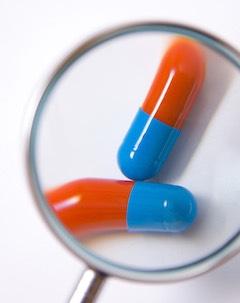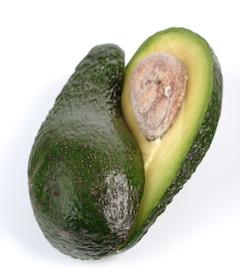
Folate and folic acid are different. Although they are both varieties of vitamin B9, they are not the same thing.
Even medical professionals sometimes offer confusing information about folate and folic acid.
Why does it matter? Folate and folic acid affect your body differently.
We’ll describe the differences so that you can determine which, if either, is necessary for your nutritional needs.
Test your knowledge now or come back after reading this article to check your learning:
What is Vitamin B9?
Vitamin B9 is found naturally in certain foods, added to other foods and found in dietary supplements (1).
The vitamin is vital for cell development and the synthesis of DNA and RNA. It is necessary for chemical reactions that occur when the body metabolizes certain amino acids.
The body stores about 10 to 30 mg of folate at a time. Approximately 50% is stored in the liver. The other half is stored in the blood and tissue.
Although the blood plasma folate levels are often used to determine an individual’s plasma levels, they may reflect the influence from dietary folate instead of stored folate (1).
The adult daily recommended intake of dietary folate equivalents (DFEs) is 400mcg (1).
Most people in the United States have adequate folate levels. The average American adult takes in about 450 to 650 mcg of DFEs (2). The average American child consumes about 385 to 675 mcg of DFEs (3).
Why talk about the vitamin in terms of folate “equivalents?” The answer is because vitamin B9 is not always consumed in the same form: Folic acid is different than folate.
Certain groups have been found to be at risk of having inadequate vitamin B9 levels. These include women in their childbearing years (2).
KEY POINT: Vitamin B9 is an essential nutrient that is responsible for certain metabolic processes in the body. While many people may have sufficient levels of the vitamin, women of childbearing age may be at risk of having a deficiency.
Folate Deficiency Can Cause Health Problems
Most people associate folate and folic acid with pregnancy. Vitamin B9 deficiency in women of childbearing years can increase their risk of giving birth to infants with neural tube defects, although the reason for this is unknown (4, 5).

Low levels of this vitamin are also associated with other health problems, including the following:
- Elevated blood concentrations of homocysteine: Homocysteine is an amino acid that is created in the body. Elevated levels of homocysteine in the blood have been linked to age-related mental decline, cardiovascular disease and an increased risk of stroke (6, 7, 8).
- Birth abnormalities: A major Hungarian study found that supplementing pregnant women with vitamin B9 prevented 90% of neural tube defects and about 40% of congenital heart defects in infants (9).
- Poor pregnancy outcomes: Low concentrations of vitamin B9 during pregnancy have been linked to an increased risk of premature birth, low birth weight in infants and fetal growth problems (10).
- Cancer: Folate supplementation has been found to restrict the growth of cancer cells (11). Folate deficiency has been linked to an increased risk of cancer (12).
- Depression: People with low folate levels may be at greater risk of depression and may not respond well to antidepressants (13). In fact, folic acid has been studied as a treatment for depression (14).
Because it’s important to get enough vitamin B9 in the diet, many foods are enriched with the vitamin. This practice is required in certain countries, including the U.S. and Canada (1).
In 1998, the U.S. Food and Drug Administration started to require manufacturers to enrich certain processed grain products, like rice, bread and cereal, with vitamin B9 (15). This increased mean folic acid consumption in the U.S. by approximately 190 mcg per day, which exceeded expectations (16).
However, when the vitamin is added to supplements and foods, it is present as folic acid, not folate.
KEY POINT: Although low levels of folate or folic acid are associated with problems for pregnant women and babies, deficiency in the nutrient can cause other health problems. The form of the vitamin that is added to foods is folic acid, not folate.
Folate Is the Natural Form of Vitamin B9

When vitamin B9 is naturally found in foods, it is called folate. It was once referred to as folacin in the medical community (1).
The word comes from the Latin term folium, meaning leaf. Green, leafy vegetables are abundant sources of folate. According to the National Institutes of Health Office of Dietary Supplements, folate is the general term used to refer to both folate and folic acid.
Folate is often used to refer to a group of compounds that have comparable characteristics. The natural type of circulating plasma folate is levomefolic acid or 5-methyltetrahydrofolic acid (5-MTHF).
Folates that are consumed in the naturally occurring form are efficiently converted into 5-MTHF in the intestines so that they can be used by the body (17).
KEY POINT: Folate is the type of vitamin B9 that occurs naturally in foods and is efficiently converted in the gut into 5-MTHF for bioavailability.
Folic Acid Is the Manufactured Type of Vitamin B9
Folic acid is pteroylmonoglutamic acid, which does not occur naturally. It is manufactured and added to some supplements and foods.
Synthetic folic acid is actually more readily absorbed by the body (18). Folates that occur naturally in foods are only 80% as bioavailable as folic acid.
However, most of the folic acid that is consumed is not converted into 5-MTHF in the intestines.

It instead is converted in the liver and other tissues. This means that it can reach a saturation point, leaving unmetabolized folic acid circulating through the bloodstream (17, 19) .
This may result in overexposure in people who take supplements and eat foods that are fortified with folic acid (20, 21).
Too much folic acid can increase the risk of colorectal cancer in some people (22).
In addition, folic acid can negatively interact with methotrexate, and antiepileptic drugs.
Methotrexate is used in cancer and autoimmune treatments. Taking folic acid while undergoing this type of treatment can negate the medication’s anticancer properties. Folic acid may also reduce the levels of antiepileptic drugs in the bloodstream (23).
Sulfasalazine, which is used mainly to treat ulcerative colitis, can prevent the body from absorbing folate or folic acid. People taking this medication may want to talk to their doctor about increasing the amount of vitamin B9 that they consume (23).
Researchers have found unmetabolized folic acid in the bloodstreams of people who consume fortified foods or supplements. This could cause health problems, especially in the elderly (24, 25, 26).
Some experts have found that consuming other B vitamins along with folic acid can help the body convert it into a usable form (24).
KEY POINT: Folic acid is manufactured. While it is more readily absorbed by the body, it is not converted into a bioavailable form as efficiently. This may cause excess folic acid to circulate in the bloodstream.
Infographic (Pin, Share or Embed)

Share This Infographic On Your Site
<p><a href='https://www.authoritydiet.com/folate-vs-folic-acid-whats-difference-same/'><img src='https://www.authoritydiet.com/images/i/folate-vs-folic-acid-hd.jpg' border='0' /></a><br /><strong>Please include attribution to AuthorityDiet.com with this graphic.</strong></p>
Unmetabolized Folic Acid Could Be Bad for Your Health

People who consistently have high levels of unmetabolized folic acid in the bloodstream could experience health problems.
Although folate can help prevent tumors from growing, elevated folic acid levels in the blood have been linked with an increased risk of certain cancers. Unmetabolized folic acid can also accelerate the development of some precancerous lesions (27, 28, 29).
Elevated levels of folic acid in the bloodstream can also cause a B12 deficiency in an elderly individual to go unnoticed. A B12 deficiency can lead to anemia. Supplementing with folic acid can help reverse the anemia, making the B12 deficiency harder to detect.
A B12 deficiency can cause cognitive and nerve impairment, which could be irreparable if it is not detected early enough (30, 31).
As little as 400 mcg of folic acid a day can cause it to accumulate in the body (20, 21).
KEY POINT: Elevated levels of unmetabolized folic acid in the bloodstream can increase cancer risk and mask signs of low vitamin B12 levels.
What is the Best Way to Consume Enough Vitamin B9?

The ideal way to take in enough vitamin B9 is by eating folate-rich foods.
The following foods contain high levels of folate (32):
- Asparagus: 17% DV in 1 cup
- Avocados: 30% DV in 1 fruit
- Brussels sprouts: 13% DV in 1 cup
- Spinach: 15% DV in 1 cup (raw)
If you’re in the category of individuals susceptible to vitamin B9 deficiency, such as pregnant women, you may find it more convenient to take a supplement.
However, taking a supplement of 5-MTHF (like these) may be healthier than taking a folic acid supplement. Taking a 5-MTHF supplement isn’t as likely to mask vitamin B12 deficiency symptoms.
Since researchers are still somewhat unsure about the health hazards posed by circulating folic acid levels, it may be safer to stick with 5-MTHF (33, 34, 35, 36, 37).
KEY POINT: As with many nutrients, the best way to get vitamin B9 is in its natural form from foods. Taking 5-MTHF may be a healthier way to supplement with the vitamin than taking folic acid.
Bottom Line
Folic acid and folate are not the same.
Folate is a natural form of vitamin B9 that is found in foods. Folic acid is created in a lab to add to supplements and foods.
While the body absorbs more folic acid, it doesn’t convert it as well as it does folate.
Therefore, it cannot be used as efficiently and could actually pose health dangers.
Some researchers even criticize countries that mandate adding folic acid to certain foods.
If you can’t get enough folate from foods, you can supplement with 5-MTHF, a different form of vitamin B9 that may have fewer negative health effects.
Do you feel a need for more folate, or experienced any of conditions related to folate deficiency? Let me know in the comments below.

